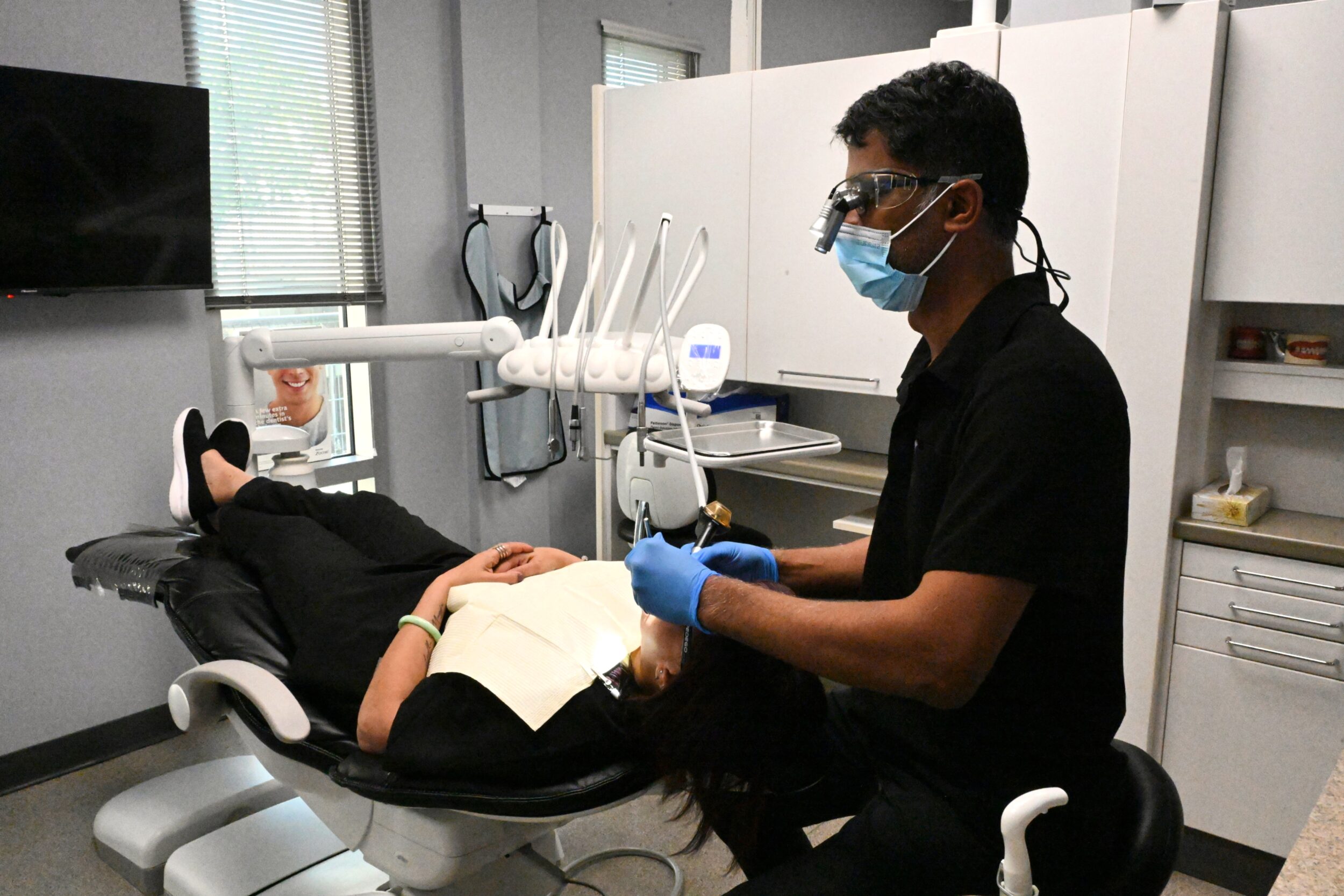Pocket Irrigation in Calgary, AB
Periodontal disease is a progressive condition that results in gum inflammation, bone and gum recession, and tooth loss if left untreated. The disease can be treated with a variety of effective treatments and procedures, including pocket irrigation, which can help slow its progression.
The purpose of pocket irrigation is to remove plaque from the interdental (between the teeth) and subgingival (under the gumline) regions of the mouth in order to prevent the colonization of harmful oral bacteria. During this procedure, antibacterials are also delivered to the subgingival area.

Reasons for pocket irrigation
Oral irrigation, also known as pocket irrigation, is a versatile dental treatment used for several preventative purposes. Pocket irrigation can be performed during a professional dental cleaning or at home using a specially modified oral irrigator.
The following are the main benefits of pocket irrigation:
- Interdental cleaning –
Plaque, food particles, and other debris are removed from between the teeth by pocket irrigators. Keeping gum pockets clean and shallow keeps them healthy by removing harmful materials and bacteria. - Antimicrobial application –
Some strains of harmful oral bacteria have been eliminated and prevented using antimicrobial substances. The use of antimicrobial substances can be combined with water or used as a stand-alone treatment for pocket irrigation. - Halitosis prevention –
Bad breath (halitosis) is generally caused by old food particles between teeth and tooth decay. Even a toothbrush and dental scraper cannot reach into the depths of the gum pockets, but water jets can flush out food particles and help clean both above and below the gum line. - Subgingival cleaning –
It is important to note that pocket irrigators have rounded tips, which reduces the risk of tissue damage when cleaning under the gum line. By flushing out bacteria, particles, and toxins below the gumline, the side port opening facilitates extensive cleaning.
What does pocket irrigation treatment involve?
Irrigation of pockets is usually performed in conjunction with other dental treatments, such as a professional dental cleaning or pocket reduction surgery.
The tartar and subgingival plaque will be removed with special scaling and root planing instruments during pocket reduction surgery. Using an oral irrigator, antimicrobial agents can be applied after the pockets are free of debris. As a result, harmful oral bacteria that remain in the pockets will be reduced.
The pockets may be cleaned with a pocket irrigator after scaling and root planing during deep cleaning. It may be necessary to apply an antimicrobial agent in order to reduce subgingival oral bacteria.
A water jet or water pick can be used to perform pocket irrigation at home as part of a daily oral hygiene routine. When used as a substitute for professional dental cleaning, flushing the interdental area with water is less harmful to soft tissue than using dental floss.
You can ask your dentist about pocket irrigation, dental cleaning, periodontal disease, and treatment if you have questions.